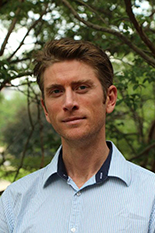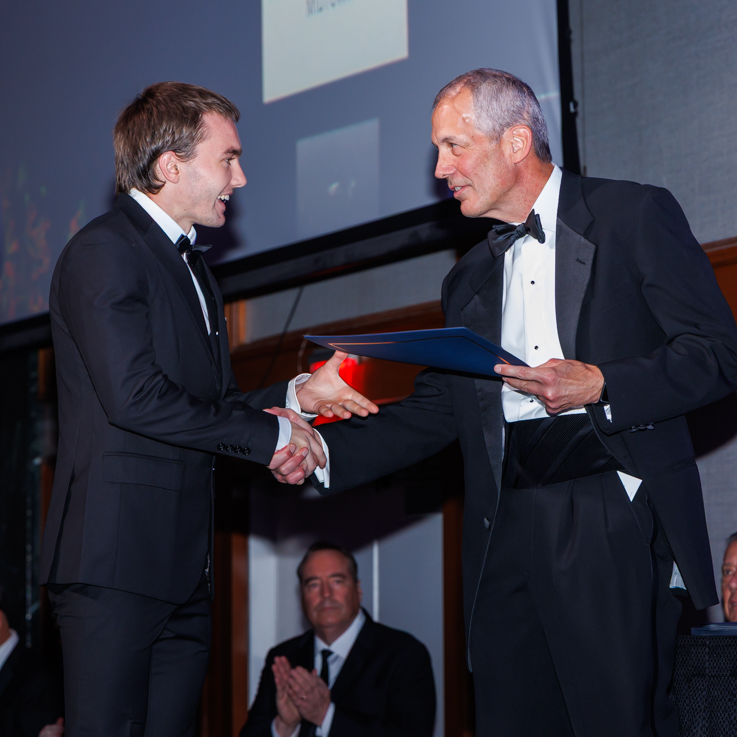News Story
Shock Waves and Boundary Layers

UMD Assistant Aerospace Engineering Professor Stuart Laurence. Photo Credit: Tom Hurst
The pursuit of hypersonic flight has been ongoing for decades, yet understanding the complex flow physics that occur at such high speeds continues to be a challenge.
Stuart Laurence, an assistant professor of Aerospace Engineering, is currently conducting an experimental investigation of fluid-structure interaction problems that occur at hypersonic speeds. When a vehicle travels that fast, it generates a shock wave that causes air pressure, temperature, and density to rise quickly.
"The magnitudes of the changes in flow properties caused by shock waves can be tremendous," says Laurence, who recently won a Defense University Research Instrumentation Program (DURIP) Award to pursue work in this area. “At high enough hypersonic speeds, the energy in the flow behind the shock can even break apart the air molecules."
The increase is often so great that it produces extreme thermodynamic effects. A thin region near the surface of the vehicle known as the boundary layer, which may be only a few millimeters across, experiences very high temperatures, and the flow in this area can quickly change from a streamlined current along the front of the vehicle into a turbulent and chaotic state towards the back of it. This can lead to extreme mechanical and heating loads on the vehicle surfaces.
"My work involves examining the coupling between a flexible panel and the flowfield produced in a hypersonic shock-wave/boundary-layer interaction," Laurence says. The DURIP Award will fund completion of a high-temperature Ludwieg tube for the simulation of such hypersonic flows, as well as a schlieren flow visualization system.
The Ludwieg tube, a type of high-speed wind tunnel, uses electrical heating to produce hypersonic flow for short periods of time. The completed tunnel will include a dump tank, a nozzle and test section, and a 22-m long charge tube. The schlieren system will enable the visualization of important hypersonic flow features, including shock waves and boundary layers.
"A lot of our work focuses on using schlieren visualizations at very high frame rates—100,000 frames a second or faster—to obtain quantitative information about the unsteady flowfield," explains Laurence, who also won a Faculty Early Career Development Award this year from the National Science Foundation. The award will support research focused on the effects of thermal nonequilibrium on the acoustic noise radiated by a compressible turbulent boundary layer.
In high-speed flows, not only does turbulence within the boundary layer lead to extreme surface conditions, the turbulent motions can also cause the generation of intense, outward propagating sound waves. The NSF-funded project aims to understand such noise generation when the gas in question (e.g., carbon dioxide, or high-temperature air) absorbs sound waves at certain frequencies because of the excitation of internal energy modes within the molecules.
Published October 1, 2018









